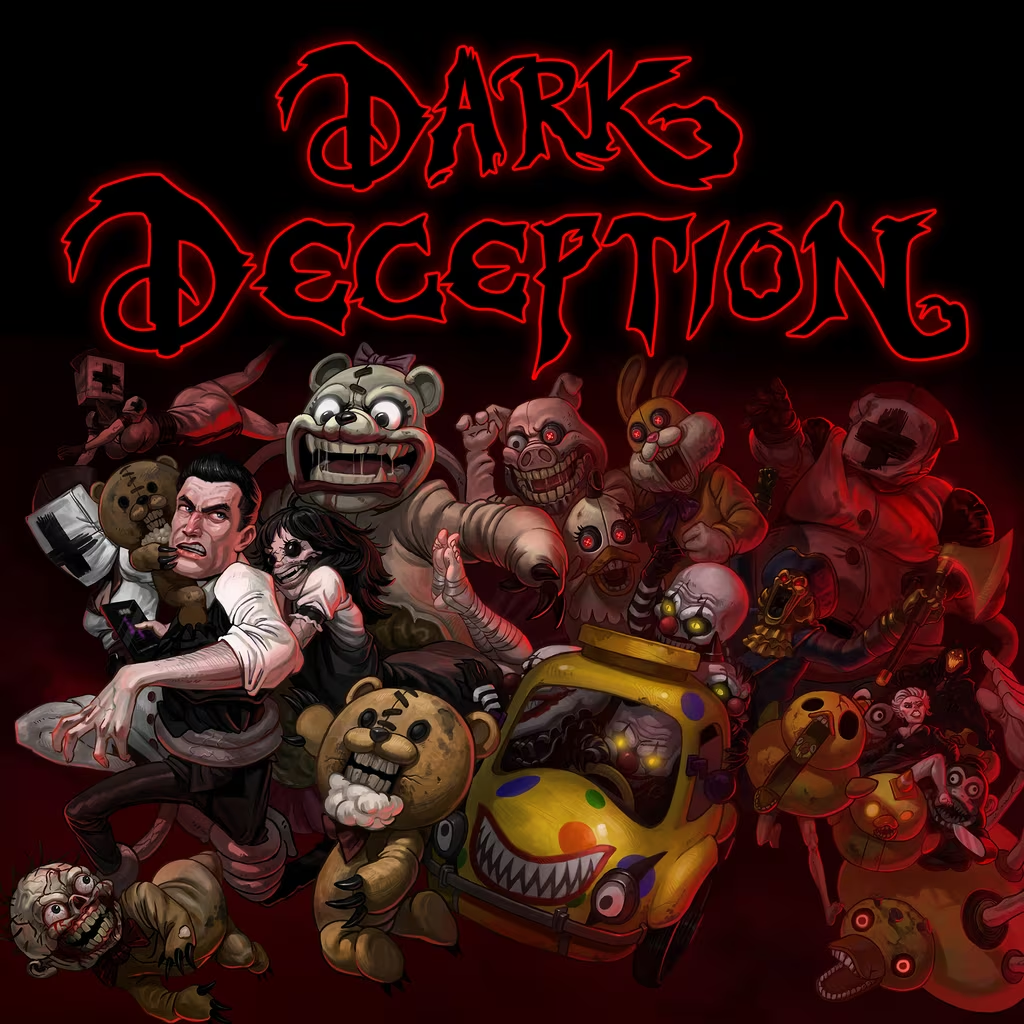If you could undo the worst mistake you ever made, what would you be willing to do to get the chance to do it? Would you give up your most valuable possession? Do something outlandishly crazy or gross? Engage in a demonic ritual and face manifestations of your fatal flaws?
“Dark Deception” is a lesser-known indie video game that give players the chance to experience this very dilemma. In my opinion, the game doesn’t get nearly as much attention as it deserves. Created by Vince Livings, CEO of Glowstick Entertainment, the game’s first chapter launched in September 2018. While its premise may initially seem simple, it has a beautifully intricate story that enshrouds the franchise with mystery and, of course, deception.
The game’s objective is simple: the player must navigate through various levels to collect floating, gem-like objects called “soul shards” to deactivate the alters that protect the fragments of a powerful ring, then escape with it before the monsters dwelling within them subject the player to their malicious whims.
The player assumes the role of a man by the name of Doug Houser, a disgruntled and morally compromised lawyer who carries the weight of a troubled past. Doug’s childhood was marked by abuse, shaping him into a man full of resentment, insecurity and toxic behaviors. His marriage suffers because of his infidelity and toxicity towards his family, and after a series of adulterous decisions, his wife and daughter meet a tragic end guided by his own selfishness. As the regret settles within him over time, he begins to resort to supernatural methods to erase his wrongdoings.
After conducting a demonic ritual, Doug wakes up to find himself in a purgatory-like dimension that dons the appearance of an extravagant ballroom. Its governor is a tall, shrewd woman named Bierce, who offers Doug the chance at redemption that he so desperately desires. She explains that there is a way for Doug to sponge away his egregious actions with the help of the ring fragments that he collects. Once united, they will craft the Riddle of Heaven, an artifact belonging to a powerful demon overlord named Malak, who serves as the game’s primary antagonist. However, in order to get the new life he wants, Doug must venture into the bowels of his worst nightmares made manifest to collect the ring’s pieces.
Each nightmare has its own level, its own map and its own arrangement of enemies that relentlessly pursue Doug from the moment he encroaches upon their territory. These levels are deeply tied to Doug’s personal failings, each one personifying a different aspect of his personality that he must confront. The game beautifully creates this personification of Doug’s darker traits, turning his emotional baggage into horrifying obstacles.
One of my favorite levels is titled “Deadly Decadence”, which exemplifies Doug’s greed. Set in an opulent, gold-encrusted mansion, the level glows with a hazy yellow hue, reflecting the excesses of material wealth. The enemies here are the Watchers: souls of individuals who once flaunted their riches at the expense of everything else. In death, they are transformed into statues of solid gold, cursed to remain immobile unless unseen by the player.
Another of my favorites is called “Torment Therapy” that nods to both Doug’s history of medical issues as well as his infidelity. The level is set in a brothel-like hospital, where each nurse is a manifestation of a female soul tormented by an abusive male lover. These nurses are marked with bags over their heads, emphasizing their victimhood while highlighting their sexualized appearances.
The things that first attracted me to this game were the character designs. As a graphic designer interested in illustration and conceptual art, I was utterly blown away by the detail that went into each one. Not only did the sculpts look fantastic in quality, but they fit the literary roles they were given. As mentioned before about the nurses in “Torment Therapy”, their sexualized figures paired with their unseen faces perfectly reflect how they were treated in life as mere playthings for their partners to do with as they pleased. The marriage of quality literature and character design is something I don’t see much in other video games. Perhaps it’s just the nerdy graphic designer in me, but being able to construct a compelling narrative with both of these aspects done nearly flawlessly is the first mark of a great game.
The writing is also done with a fantastic level of extravagance. The banter between Bierce and Malak after each level’s conclusion is comical, yet throughout the game, it is still uncertain if either of them can be fully trusted. Additionally, each character, regardless of how small their role in the game is, has such a memorable personality and well-written link back to Doug’s past trauma. It has been theorized that each level has taken inspiration from the famous literary goldmine “Inferno” by Dante Alighieri and represents one of his nine circles of hell.
One of these circles is fraud. In the level “Stranger Sewers”, Doug finds himself in a labyrinth of sewer tunnels accompanied by giant, weathered duck toys called Dread Duckies. However, not all these Duckies are as they seem. Some are mere decoys, peacefully floating along with the current of the sewer, but others are possessed by the souls of frauds and rotten liars—masters of deception as they were in life. This sort of symbolism is continuously evident in each of the game’s levels, and as a writer myself, I am fascinated by how the story has progressed. The game has been out for several years, yet each chapter blends seamlessly with the last as if they were all released together.
That all said, I do have my gripes. I could talk for hours about how well the design and literary choices were made, but at the end of the day, it’s a video game, and the gameplay itself is likely what people will be most interested in. And the gameplay is…underwhelming to say the least.
“Dark Deception” is essentially a modernized spinoff of “Pac-Man” with far more lore backing it up. As mentioned before, the main objective is to collect soul shards and dodge enemies. There isn’t much interaction with the maps or enemies aside from the occasional boss fight that demands more defensive tactics than actual battles. As much as the game is beautifully crafted in terms of story and visuals, the actual mechanics just don’t quite measure up to the potential of what’s been created.
The game is also unfinished. I don’t mean to say that it’s full of glitches and bugs that make it hard to play—the game literally does not have a conclusion yet. The final chapter has been in the works for over three years now, and while it has been teased to be the most intricate chapter yet, I’m a little bit salty about the fact that the first eighty percent of the game took less time to be released as the last twenty percent. On top of that, there have been no trailers released for the final chapter yet, and teasers are few and far between.
Despite these issues, I still think “Dark Deception” is a great game—one that showcases how storytelling and character design can elevate a game beyond the typical. If you’re into conceptual design, there’s a lot to admire here. Personally, I like to have it running in the background while I do chores or homework because of its slow, repetitive pace. There’s so much I haven’t even touched on that I’d encourage anyone interested to explore for themselves. It’s an unsung gem of creative storytelling that definitely deserves more recognition, and I’d absolutely recommend it to anyone willing to give it a shot.




























































